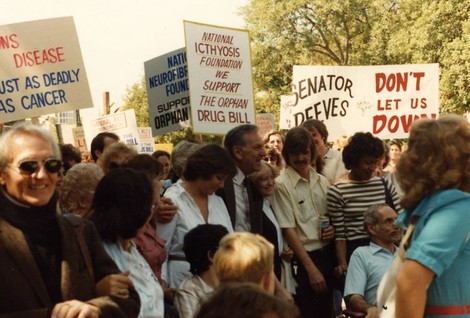Your podcast discovery platform
Curious minds select the most fascinating podcasts from around the world. Discover hand-piqd audio recommendations on your favorite topics.

piqer for: Health and Sanity Boom and bust Climate and Environment
Melissa Hutsell is an award-winning freelance journalist with a deep rooted passion for both community and international journalism. She was born and raised in Northern California, and has lived, studied, worked, and traveled in more 20 different countries. Melissa holds a Master's degree in Global Journalism from City University London, as well as degrees in Journalism and Globalization from Humboldt State University. Though she covers various topics as both a writer and editor, she specializes in business and cannabis journalism.
Orphan Drugs: A Policy Drama About The Development Of Drugs For Rare Diseases
This story involves a hit 70s TV show, a fake march on Washington, a carnival concession company, and the development of drugs for rare diseases.
The podcast begins with Abbey Meyers whose first son, David, was born with Tourette’s syndrome. David entered a clinical trial for a drug originally intended to treat schizophrenia.
The drug worked well for David; but it didn’t work so well in the treatment of schizophrenia. Because of that, the drug company dropped the drug entirely. They wouldn’t make the medication or sell it as a treatment for Tourette’s because it was considered uncommon at the time: “Drug companies weren’t interested in developing treatments for rare conditions,” the host explains, “the big money was in drugs with lots of customers, like blood-pressure medications.”
Meyers raised awareness for these abandoned, but promising treatments, aka orphan drugs. Her activism caught the attention of the producer of a popular TV show, "Quincy, M.E." Maurice Klugman, the producer, suffered from a rare disease himself.
He then produced a series of "Quincy, M.E." episodes that put pressure on the U.S. congress and inspired policy change.The Orphan Drug Act was passed; it effectively gave incentives to companies that made medications for sufferers of rare diseases. Benefits included a seven-year monopoly over products, and the ability to charge whatever they wanted for them.
This made the market for treatments of rare diseases highly profitable. For example, one particular drug cost $150,000 annually by 1991. Companies – like Fun City Popcorn – began to merge, invest and make millions per year from the sales of one medication.
Meyers’ legacy became a double-edged sword. Nearly four decades later, the act “has been responsible for the most miraculous treatments in many diseases,” she added, "it’s also been a major economic problem because some of the companies that make these drugs have put a price on them that make the drugs absolutely unaffordable.”
